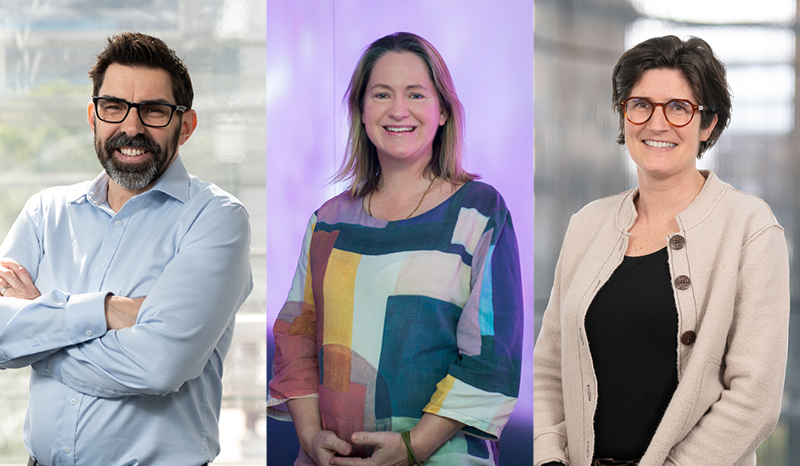Broomfield BJ, Tan CW, Qin RZ, Abberger H, Duckworth BC, Alvarado C, Dalit L, Lee CL, Mugan RS, Mazrad ZAI, Muramatsu H, Mackiewicz L, Williams BE, Chen J, Takanashi A, Fabb S, Pellegrini M, Rogers KL, Moon WJ, Pouton CW, Davis MJ, Nutt SL, Pardi N, Wimmer VC, Groom JR. Transient inhibition of type I interferon enhances CD8+ T cell stemness and vaccine protection. Journal of Experimental Medicine. 2025;222(5):10.1084/jem.20241148
Bergamasco MI, Ogier JM, Garnham AL, Whitehead L, Rogers K, Smyth GK, Burt RA, Voss AK, Thomas T. Loss of KAT6B causes premature ossification and promotes osteoblast differentiation during development. Developmental Biology. 2025;520:10.1016/j.ydbio.2025.01.012
Du MRM, Wang C, Law CW, Amann-Zalcenstein D, Anttila CJA, Ling L, Hickey PF, Sargeant CJ, Chen Y, Ioannidis LJ, Rajasekhar P, Yip RKH, Rogers KL, Hansen DS, Bowden R, Ritchie ME. Benchmarking spatial transcriptomics technologies with the multi-sample SpatialBenchVisium dataset. Genome Biology. 2025;26(1):10.1186/s13059-025-03543-4
Bergamasco MI, Ozturk E, Casillas-Espinosa PM, Garnham AL, Abeysekera W, Wimmer VC, Rajasekhar P, Vanyai HK, Whitehead L, Blewitt ME, Rogers K, Vogel AP, Hannan AJ, Smyth GK, Jones NC, Thomas T, Voss AK. KAT6B overexpression in mice causes aggression, anxiety, and epilepsy. iScience. 2025;28(3):10.1016/j.isci.2025.111953
Yip RKH, Hawkins ED, Bowden R, Rogers KL. Towards deciphering the bone marrow microenvironment with spatial multi-omics. Seminars in Cell and Developmental Biology. 2025;167:10.1016/j.semcdb.2025.01.001
Atkin-Smith GK, Santavanond JP, Light A, Rimes JS, Samson AL, Er J, Liu J, Johnson DN, Le Page M, Rajasekhar P, Yip RKH, Geoghegan ND, Rogers KL, Chang C, Bryant VL, Margetts M, Keightley MC, Kilpatrick TJ, Binder MD, Tran S, Lee EF, Fairlie WD, Ozkocak DC, Wei AH, Hawkins ED, Poon IKH. In situ visualization of endothelial cell-derived extracellular vesicle formation in steady state and malignant conditions. Nature Communications. 2024;15(1):10.1038/s41467-024-52867-5
Dans MG, Boulet C, Watson GM, Nguyen W, Dziekan JM, Evelyn C, Reaksudsan K, Mehra S, Razook Z, Geoghegan ND, Mlodzianoski MJ, Goodman CD, Ling DB, Jonsdottir TK, Tong J, Famodimu MT, Kristan M, Pollard H, Stewart LB, Brandner-Garrod L, Sutherland CJ, Delves MJ, McFadden GI, Barry AE, Crabb BS, de Koning-Ward TF, Rogers KL, Cowman AF, Tham W-H, Sleebs BE, Gilson PR. Author Correction: Aryl amino acetamides prevent Plasmodium falciparum ring development via targeting the lipid-transfer protein PfSTART1. Nature Communications. 2024;15(1):10.1038/s41467-024-52849-7
Kousa AI, Jahn L, Zhao K, Flores AE, Acenas D, Lederer E, Argyropoulos KV, Lemarquis AL, Granadier D, Cooper K, D’Andrea M, Sheridan JM, Tsai J, Sikkema L, Lazrak A, Nichols K, Lee N, Ghale R, Malard F, Andrlova H, Velardi E, Youssef S, Burgos da Silva M, Docampo M, Sharma R, Mazutis L, Wimmer VC, Rogers KL, DeWolf S, Gipson B, Gomes ALC, Setty M, Pe’er D, Hale L, Manley NR, Gray DHD, van den Brink MRM, Dudakov JA. Age-related epithelial defects limit thymic function and regeneration. Nature Immunology. 2024;25(9):10.1038/s41590-024-01915-9
Chiou S, Al-Ani AH, Pan Y, Patel KM, Kong IY, Whitehead LW, Light A, Young SN, Barrios M, Sargeant C, Rajasekhar P, Zhu L, Hempel A, Lin A, Rickard JA, Hall C, Gangatirkar P, Yip RK, Cawthorne W, Jacobsen AV, Horne CR, Martin KR, Ioannidis LJ, Hansen DS, Day J, Wicks IP, Law C, Ritchie ME, Bowden R, Hildebrand JM, O’Reilly LA, Silke J, Giulino-Roth L, Tsui E, Rogers KL, Hawkins ED, Christensen B, Murphy JM, Samson AL. An immunohistochemical atlas of necroptotic pathway expression. EMBO Molecular Medicine. 2024;16(7):10.1038/s44321-024-00074-6
Dans MG, Boulet C, Watson GM, Nguyen W, Dziekan JM, Evelyn C, Reaksudsan K, Mehra S, Razook Z, Geoghegan ND, Mlodzianoski MJ, Goodman CD, Ling DB, Jonsdottir TK, Tong J, Famodimu MT, Kristan M, Pollard H, Stewart LB, Brandner-Garrod L, Sutherland CJ, Delves MJ, McFadden GI, Barry AE, Crabb BS, de Koning-Ward TF, Rogers KL, Cowman AF, Tham W-H, Sleebs BE, Gilson PR. Aryl amino acetamides prevent Plasmodium falciparum ring development via targeting the lipid-transfer protein PfSTART1. Nature Communications. 2024;15(1):10.1038/s41467-024-49491-8



